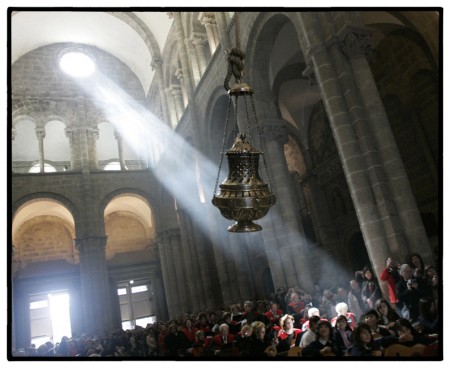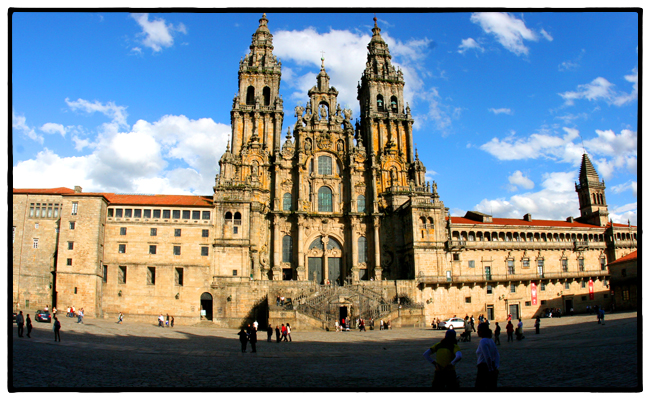I had to go to mass today. Not because of all the nasty things I said about people who believe the fairytale about St. James’s body being discovered by a crazy religious nut back in 813 (769 years after he was beheaded in Jerusalem), but because they were going to bring out La Alcachofa Grande—The Big Artichoke.
The Big Artichoke is a thurible. A thurible is a censer—one of those things you put incense in and swing around in church to make everybody get all mystical. I was an altar boy when I was a kid and I loved being the guy that got to swing the censer around. It was like being Merlin.
Anyway, the thurible at the cathedral in Santiago de Compostela is so honkin’ big that its nickname is The Big Artichoke (but it’s officially known as the Botafumeiro). The Botafumeiro weighs over 175 lbs. and is over five feet tall. The eight guys that swing it, called tirabeleiros, use shovels to fill it with 80 pounds of charcoal and incense. You have to see this thing in action to really get an idea of what I’d talking about (see the YouTube clip below and watch what happens to the tiraboleiro at the end when he catches the Botafumeiro to stop it from swinging).
They started using this giant censer back in the Middle Ages when all these stinky pilgrims were arriving from all over Europe after making their pilgrimages to Santiago de Compostela. Of course the first thing they’d want to do was attend mass in the Catedral del Apóstol. But they smelled like dead goats and many had various diseases (see my earlier blog about the hospital that was built for these buggers which is now a luxury hotel), which didn’t make it real pleasant for the locals.
So what to do?
Build a gigantic thurible and swing it from the roof of the church over the unwashed masses. It wouldn’t clean them up but at least it would mask the stink in the church. Besides, it was thought at the time that the incense smoke had a prophylactic effect against things like the plague (which wiped out something like 30-60 percent of Europe’s population in the 14th century). So swing away!






Recent Comments